Energy metabolism couples hepatocyte integrin-linked kinase to liver glucoregulation and postabsorptive responses of mice in an age-dependent manner
- PMID: 30835508
- PMCID: PMC6732653
- DOI: 10.1152/ajpendo.00496.2018
Energy metabolism couples hepatocyte integrin-linked kinase to liver glucoregulation and postabsorptive responses of mice in an age-dependent manner
Abstract
Integrin-linked kinase (ILK) is a critical intracellular signaling node for integrin receptors. Its role in liver development is complex, as ILK deletion at E10.5 (before hepatocyte differentiation) results in biochemical and morphological differences that resolve as mice age. Nevertheless, mice with ILK depleted specifically in hepatocytes are protected from the hepatic insulin resistance during obesity. Despite the potential importance of hepatocyte ILK to metabolic health, it is unknown how ILK controls hepatic metabolism or glucoregulation. The present study tested the role of ILK in hepatic metabolism and glucoregulation by deleting it specifically in hepatocytes, using a cre-lox system that begins expression at E15.5 (after initiation of hepatocyte differentiation). These mice develop the most severe morphological and glucoregulatory abnormalities at 6 wk, but these gradually resolve with age. After identifying when the deletion of ILK caused a severe metabolic phenotype, in depth studies were performed at this time point to define the metabolic programs that coordinate control of glucoregulation that are regulated by ILK. We show that 6-wk-old ILK-deficient mice have higher glucose tolerance and decreased net glycogen synthesis. Additionally, ILK was shown to be necessary for transcription of mitochondrial-related genes, oxidative metabolism, and maintenance of cellular energy status. Thus, ILK is required for maintaining hepatic transcriptional and metabolic programs that sustain oxidative metabolism, which are required for hepatic maintenance of glucose homeostasis.
Keywords: glucose homeostasis; glycogen metabolism; hepatocyte signaling; in vivo physiology; integrin signaling; liver metabolism.
Figures


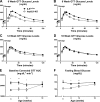
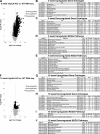
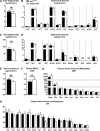


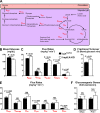
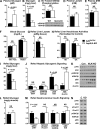
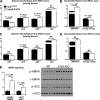


Similar articles
-
Integrin-Linked Kinase Is Necessary for the Development of Diet-Induced Hepatic Insulin Resistance.Diabetes. 2017 Feb;66(2):325-334. doi: 10.2337/db16-0484. Epub 2016 Nov 29. Diabetes. 2017. PMID: 27899483 Free PMC article.
-
Integrin-Linked Kinase in Muscle Is Necessary for the Development of Insulin Resistance in Diet-Induced Obese Mice.Diabetes. 2016 Jun;65(6):1590-600. doi: 10.2337/db15-1434. Epub 2016 Apr 5. Diabetes. 2016. PMID: 27207548 Free PMC article.
-
Liver-specific ablation of integrin-linked kinase in mice results in abnormal histology, enhanced cell proliferation, and hepatomegaly.Hepatology. 2008 Dec;48(6):1932-41. doi: 10.1002/hep.22537. Hepatology. 2008. PMID: 18846549 Free PMC article.
-
Integrin Linked Kinase (ILK) and its Role in Liver Pathobiology.Gene Expr. 2021 Jun 11;20(3):201-207. doi: 10.3727/105221621X16113475275710. Epub 2021 Jan 22. Gene Expr. 2021. PMID: 33482930 Free PMC article. Review.
-
Hepatocytes: critical for glucose homeostasis.Int J Biochem Cell Biol. 2004 May;36(5):753-8. doi: 10.1016/j.biocel.2003.10.002. Int J Biochem Cell Biol. 2004. PMID: 15061128 Review.
Cited by
-
Loss of hepatic phosphoenolpyruvate carboxykinase 1 dysregulates metabolic responses to acute exercise but enhances adaptations to exercise training in mice.Am J Physiol Endocrinol Metab. 2023 Jan 1;324(1):E9-E23. doi: 10.1152/ajpendo.00222.2022. Epub 2022 Nov 9. Am J Physiol Endocrinol Metab. 2023. PMID: 36351254 Free PMC article.
-
Integrin-Linked Kinase (ILK) Promotes Mitochondrial Dysfunction by Decreasing CPT1A Expression in a Folic Acid-Based Model of Kidney Disease.Int J Mol Sci. 2025 Feb 21;26(5):1861. doi: 10.3390/ijms26051861. Int J Mol Sci. 2025. PMID: 40076489 Free PMC article.
-
EGFR-mediated activation of adipose tissue macrophages promotes obesity and insulin resistance.Nat Commun. 2022 Aug 10;13(1):4684. doi: 10.1038/s41467-022-32348-3. Nat Commun. 2022. PMID: 35948530 Free PMC article.
-
Exercise training adaptations in liver glycogen and glycerolipids require hepatic AMP-activated protein kinase in mice.Am J Physiol Endocrinol Metab. 2024 Jan 1;326(1):E14-E28. doi: 10.1152/ajpendo.00289.2023. Epub 2023 Nov 8. Am J Physiol Endocrinol Metab. 2024. PMID: 37938177 Free PMC article.
-
Potential positive and negative consequences of ZnT8 inhibition.J Endocrinol. 2020 Aug;246(2):189-205. doi: 10.1530/JOE-20-0138. J Endocrinol. 2020. PMID: 32485672 Free PMC article.
References
-
- Afgan E, Baker D, Batut B, van den Beek M, Bouvier D, Cech M, Chilton J, Clements D, Coraor N, Grüning BA, Guerler A, Hillman-Jackson J, Hiltemann S, Jalili V, Rasche H, Soranzo N, Goecks J, Taylor J, Nekrutenko A, Blankenberg D. The Galaxy platform for accessible, reproducible and collaborative biomedical analyses: 2018 update. Nucleic Acids Res 46: W537–W544, 2018. doi:10.1093/nar/gky379. - DOI - PMC - PubMed
Publication types
MeSH terms
Substances
Grants and funding
LinkOut - more resources
Full Text Sources
Medical
Molecular Biology Databases

